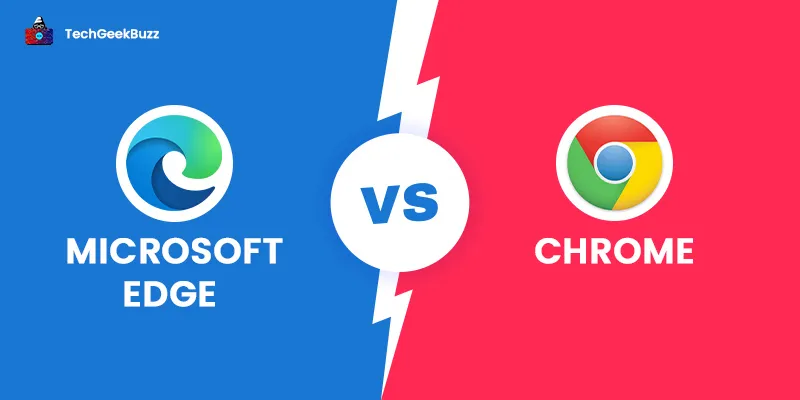Wireframing is one of the most significant steps in UI/UX design, which involves visualizing the skeleton of digital applications, including web applications. A wireframe serves as a blueprint for designing applications in the same way architects create blueprints for building houses. Generally, a wireframe is void of color, stylized fonts, and graphics. We can think of a wireframe as a skeleton of an application.
This skeleton is a two-dimensional illustration of an application’s interface. It represents the placement of the content, the spacing between elements, the available functionalities, and how end-users will interact with the page. UI/UX designers, business analysts, visual designers, developers, and those skilled in information architecture, interaction design, and user research, extensively create wireframes.
We can create wireframes by drawing sketches on a whiteboard or plain paper or using a wide variety of free and commercial software applications, called wireframe tools.
This article will make you aware of some top wireframe tools available out there. But before that, let us have a look at what exactly a wireframe is, the types of wireframes, and discuss what makes a good wireframe. So, let us start with a definition of a wireframe!
What is a Wireframe?
A wireframe is a two-dimensional skeletal framework of any website or application. It is also referred to as Page Schematic or Screen Blueprint. It provides an exact overview of an application's or a website’s content arrangement.
Also, it depicts the navigation scheme and interface elements and how they work together. Instead of concentrating on typographic style, graphics, or color, a wireframe’s primary focus lies in functionality, behavior, and priority of content. In simple words, a wireframe primarily focuses on what a screen does instead of what it looks like.
Types of Wireframes
Wireframes are created early in the software and web development process. The primary aim of using a wireframe is to map the functionality of a product and get approval from the stakeholders and development team before the product undergoes development.
There are three major types of wireframes, namely low-fidelity, mid-fidelity, and high-fidelity. Let us discuss each of these wireframe types below:
1. Low-Fidelity Wireframes
Low-fidelity wireframes serve as a design’s starting point and are considered the first stage of the wireframing process. They are the basic visual representations of applications and define their structure and hierarchy. The primary goal of low-fidelity wireframes is to address stakeholder goals, user needs, and user interactions.
We can present low-fidelity wireframes with hand-drawn sketches using various shapes to depict a page’s layout ideas. Besides hand-drawn sketches, we can also use wireframe tools, like Sketch and Balsamiq, for low-fidelity wireframes.
2. Mid-Fidelity Wireframes
Mid-fidelity wireframes come out of low-fidelity wireframes by adding more details and refinement to low-fidelity sketches. As low-fidelity wireframes focus on user flow, mid-fidelity wireframes focus on functionality. In this type of wireframe, we can define various UI elements for our web page with a primary focus on their functionality.
We can present mid-fidelity wireframes with black and white hand-drawn sketches or use wireframe tools, like Sketch or Balsamiq. Mid-fidelity wireframes clearly depict the overall structure and content layout of a web page or application.
3. High-Fidelity Wireframes
High-fidelity wireframes depend on low-fidelity wireframes and primarily focus on the usability and design of an application or web page. These wireframes depict high-level rendering of each component of a web page or application.
In addition, they include behavioral elements that focus on the content layout. High-fidelity wireframes should have a close resemblance to the final product.
Best Wireframe Tools For UI/UX Designers
We have curated a list of the best wireframe tools for UI/UX designers. Also, we will provide a glimpse into the features of each tool and their price breakdown, which will make it easier for you to pick the right wireframe tool.
1. Figma
https://www.youtube.com/watch?v=Cx2dkpBxst8
Developer: Figma Inc.
License: Proprietary
Figma is a web-based wireframe and prototyping tool. It is also available as a desktop application for Windows, macOS, and Linux and a mobile application for Android and iOS. This tool is ideal for all sorts of graphic design work, from wireframing websites, prototyping designs to crafting social media posts and designing mobile application interfaces.
Features:
- Figma has an easy drag-and-drop interface that enables anyone to design wireframes and create website mockups.
- It allows us to add interactivity to our wireframes without the need for coding.
- Figma provides out-of-the-box pre-built website components, such as navigation bars, headers, buttons, many more.
- It is not essential to install Figma on your system since it is available as a web-based wireframe and prototyping tool.
- We can easily share files created using Figma with others just by sharing its link, and the file will open in a browser.
Pricing: Figma offers two pricing plans, one comes with Design + Prototyping, and the other comes with FigJam for Whiteboard.
-
Design + Prototyping is available in three different editions:
- Starter: It is free.
- Figma Professional: It charges $12 per editor per month if billed annually. Also, it charges $15 per editor per month if billed monthly.
- Figma Organization: It charges $45 per editor per month. Only an annual subscription is available for this edition.
-
FigJam is also available in three different editions:
- Starter: It is free.
- FigJam Professional: It charges $3 per editor per month.
- FigJam Organization: It charges $5 per editor per month.
2. Adobe XD
Developer: Adobe Inc.
License: Trialware
Adobe XD, also known as Adobe Experience Design, is a user experience (UX) design tool for mobile and web applications. It also supports the creation of website wireframes and click-through prototypes. It is compatible with Windows and macOS. However, Adobe XD application is also available for Android and iOS, and you can preview designs easily on smartphones.
Features:
- Repeat Grid: It enables us to create a grid of repeating items, such as photo galleries, product listing, menus, contact lists, and many more.
- Prototype and Animation: We can create animated prototypes using linking artboards. Also, we can preview these prototypes on supported mobile devices.
- Interoperability: Adobe XD supports files from other Adobe products, such as Photoshop Sketch, Photoshop, Illustrator, and Alter Effects. It can integrate with Adobe Creative Cloud and other tools, such as Microsoft Teams and Slack for collaboration.
- Content-Aware Layout: When we add, remove, or resize objects, the content-aware layout aligns and spaces them evenly. Therefore, we can design and edit components without tinkering.
- Voice Design: This feature enables us to create applications using voice commands.
- Components: We can create components, like logos, buttons, etc., once and reuse them later when required.
- Plugins: Adobe XD enables us to create our own plugins to add additional features.
- Responsive resize: We can easily resize components for different sizes and screens.
Pricing: Adobe XD offers a free trial of 7 days. Once the free trial ends, it charges $10.48 per month and $104.96 per year.
3. Sketch
Developer: Sketch B.V.
License: Proprietary
Sketch is a vector graphics editor for macOS systems. There is a web application of Sketch that enables users to use it on any computer. We can use Sketch for anything, from wireframes and icon vector design to the user interface and user experience design of web and mobile applications. It has its own file format, i.e., designs created using Sketch are saved in the .sketch format. We can also save designs in other popular formats, such as PNG, PDF, SVG, JPG, WebP, etc. Also, we can open .sketch files in Adobe Photoshop and Adobe Illustrator.
Features:
- Sketch provides a set of vector editing tools and editable boolean operations that allows us to iterate the work at any stage of the design process.
- It offers customizable grids and resizing tools that enable us to scale our design to any screen size.
- To design faster, Sketch allows us to use shorthand and math operators. For example, consider we need to double the width of a layer and resize it from the center, just add *2c to its width attribute and hit enter.
- Sketch offers support for variable and OpenType fonts.
- We can create a component once and reuse it anywhere when required. Also, when we need to change that component, we can update every instance of it throughout the design.
- In addition, we can define a color variable, text styles, and layer styles for components.
- The Components View tool enables us to browse, organize, and edit components in one place. Also, inserting a component is super easy with searchable menus and a dedicated Insert Window.
- Sketch also provides collaboration features. It enables us to share our work with anyone in any browser with the Sketch Workspace.
Pricing: Sketch comes with two different plans, one is Standard, and the other is Business. The Standard plan is available at $9 per editor per month or $99 per editor per year. To know about the Business plan, you need to contact the vendor.
4. Balsamiq Wireframes
https://www.youtube.com/watch?v=GJ0ahDT_Lvk
Developer: Balsamiq Studios, LLC
License: Proprietary Balsamiq Wireframes is a website wireframe builder application, and it is a product of Balsamiq Studios. It is a web-based low-fidelity UI wireframe tool that lets UI designers create wireframes quickly and easily. Also, it is available as a desktop application for Windows and macOS operating systems.
Features:
- Balsamiq Wireframe provides more than 100 built-in and community-created UI controls and icons.
- It has a drag and drop interface, which makes it easier to assemble the elements within a design.
- You can share your created wireframes as images or PDFs.
- The Quick Add tool of Balsamiq Wireframe lets you add UI controls to a wireframe. You just need to enter a few letters from the name of a UI control, and Quick Add will display a list of suggestions.
- It enables you to create reusable and customizable component libraries.
- Also, you can link different wireframes together and create a prototype for a website or application.
Pricing: For a desktop application: The price for Balsamiq Wireframe for desktops varies depending on the number of users. First of all, it offers a free 30-day trial. After the trial ends, you need to purchase a license; for a single user, it charges $89. For a cloud-based tool: The web-based tool, Balsamiq Cloud, charges according to the space used. It comes with three different plans that are as follows:
- 2 projects: It charges $9 per month or $90 per year.
- 20 projects: It charges $49 per month or $490 per year.
- 200 projects: It charges $199 per month or $1990 per year.
5. Justinmind
https://www.youtube.com/watch?v=XM1cYo-Dvrc
Developer: Justinmind
License: Proprietary Justinmind is a wireframing and prototyping tool that enables users to create high-fidelity prototypes of web and mobile applications. It lets you share the wireframes and prototypes of software applications or websites on the cloud and simulate them with mobile devices.
Features:
- With Justinmind, you can create fully-functional simulations from clickable prototypes without writing a single line of code.
- You can create as many UI designs as you wish using comprehensive design features, ranging from the vector design tool, pen tool to pathfinders, and many others.
- It lets you create prototypes of web and mobile applications that can adjust to multiple screen sizes.
- Justinmind has made it easier to design, prototype, and simulate forms and data-grid lists. Also, you can test them immediately without the need for writing the code.
- It provides an Emulator and Viewer app that lets you test prototypes live on iPhones, iPads, and Android devices.
- One of the best features of Justinmind is that it allows multiple users to work on a single prototype simultaneously. Also, you can share prototypes with others and get feedback on them.
Pricing: Justinmind offers two pricing options; one is subscription-based and the other is license-based.
- Subscription: There are four different editions, as follows:
- Free
-
- Standard: It charges $9 per user per month if billed annually and $14 per user month-to-month.
- Professional: It charges $19 per user per month if billed annually and $29 per user month-to-month.
- Enterprise: You need to contact the vendor.
-
- Perpetual License: There are four different editions, as follows:
- Free
-
- Standard: It charges $245 per user.
- Professional: It charges $455 per user.
- Enterprise: You need to contact the vendor.
6. UXPin
https://www.youtube.com/watch?v=SQFGbPCjMN8
Developer: UXPin Inc.
License: Proprietary UXPin is an all-in-one design tool that lets you create everything required in UI/UX design, ranging from wireframes to advanced prototypes. If you are new to wireframing, this tool is a perfect choice. You can create a wireframe quickly and effortlessly with the built-in UI elements and drag and drop interface in UXPin. This tool is available as a native application for Windows and macOS operating systems. Also, you can use its web app in all major browsers, such as Safari, Google Chrome, and Mozilla Firefox.
Features:
- UXPin makes it easy to create a wireframe quickly, get feedback on it, and create high-grade designs and prototypes without requiring to switch between different tools.
- You can create different components and UX patterns, organize them in libraries, and share them with others.
- One of the best parts of UXPin is that it allows you to share a separate preview link to each stage of your design work.
- It allows multiple users to work simultaneously on the same prototype.
- The automatic style guide feature keeps the summary of colors, fonts, and assets of each prototype in one place.
- It integrates seamlessly with Git, thus allowing you to use React components from the Git repository for designing and building prototypes.
Pricing: There are two editions of UXPin, namely UXPin Merge and UXPin Standard.
-
UXPin Merge:
You can choose from three different pricing packages, namely Startup, Company, and Enterprise Merge.
- The Startup package is available at $89 per editor per month.
- The Company package charges $119 per editor per month.
- You need to contact the vendor for the price of Enterprise Merge.
-
UXPin Standard:
You can choose from four different editions, namely, Basic, Advanced, Professional, and Enterprise.
- The Basic plan is available at $19 per editor per month.
- You can get the Advanced plan at $29 per editor per month.
- The Professional plan charges $69 per editor per month.
- For the Enterprise plan, you need to contact sales.
7. Photoshop
Developer: Adobe Inc.
License: Trialware, SaaS
Photoshop is one of the most popular all-in-one design tools. It is considered a standard design tool in the design industry. Photoshop enables designers to create wireframes quickly, and it is compatible with Windows and macOS operating systems. One of the best reasons why Photoshop is the beloved choice of many graphic designers is that it facilitates the creation of high-fidelity mockups without switching the design system.
Features:
- The default file extension of Photoshop is .PSD, which stands for Photoshop Document. The .PSD file has a size limit of two gigabytes and a maximum height and width of 30,000 pixels.
- With Photoshop plugins, you can even extend its functionalities. Some popular plugins supported by Photoshop are filter, color correction, selection, auto-correction, import, and export.
- Photoshop lets us create our own UI components or download a kit online.
- This tool is known for its raster image editing capabilities, which help transform wireframes into mockups.
- Photoshop also provides many tools, including a pen tool, clone stamp tool, shape tools, selection tools, color replacement tools, and 3D printing tools.
Pricing: Photoshop offers a 30-day free trial. Once the free trial ends, you need to pay $22.02 per month.
8. Mockplus
https://d3h2k7ug3o5pb3.cloudfront.net/mockplus/video/2019-10-16/c554ed11-efe4-11e9-8349-4b15ee7eafa4.mp4
Developer: Mockplus Software Co., Ltd.
License: Proprietary
Mockplus is another robust tool for creating interactive wireframes for web and mobile applications. It is compatible with Windows and macOS operating systems. Also, it is available for Android and iOS devices. There are different products of Mockplus, namely Mockplus Classic and Mockplus Cloud. A Mockplus Cloud is a collaboration tool, and Mockplus Classic is a prototyping and wireframing tool.
Features:
- The drag and drop interface of Mockplus Classic helps you to create interactive wireframes that work like fully-functional prototypes.
- You can quickly start creating wireframes for web and mobile applications with more than 3,000 built-in icons, templates, and components.
- Mockplus Classic offers eight ways to preview and test wireframes on web and mobile applications.
- It enables you to share your wireframes with team members and stakeholders to get their feedback.
- There are ready-to-use templates, which make the design process easier and faster. All these templates are created using editable UI elements. Therefore, you can change the style, color, position, font, layout, etc., of the readily available templates.
- Multiple team members can work parallelly on the same wireframe.
- Mockplus Classic seamlessly integrates with Mockup Cloud and guarantees that all the work is published to a professional product design platform without harming their quality.
Pricing: Mockplus Cloud and Mockplus Classic are two different editions of Mockplus.
-
Mockplus Cloud comes with four different pricing plans, as listed below:
- Basic: It is free to use.
- Pro: It charges $5.95 per user per month if billed annually and $7.95 per user month-to-month.
- Ultimate: It is available at $12.95 per user per month if billed annually and $17.95 per user month-to-month.
- Enterprise: You need to contact the vendor.
-
Mockplus Classic also comes with four different pricing plans, as given below:
- Individual: It charges $35 per year for one user.
- Team: It is available at $299 per year and supports 10 users.
- Enterprise: It charges $1199 per year and supports 30 users.
- Group-buying: You need to contact the vendor.
9. Moqups
https://www.youtube.com/watch?v=rDOkWyhXRgs
Developer: S.C Evercoder Software S.R.L.
License: Proprietary
Moqups is an online design tool that is ideal for creating mockups, wireframes, and prototypes quickly and effortlessly. It enables team members to collaborate in real-time while working on wireframes, prototypes, and mockups.
Features:
- Since it is a web-based tool, it enables us to work from anywhere and any device without the hassle of uploading and downloading files.
- You can switch between diagrams, prototypes, wireframes, and mockups without the need to switch platforms.
- It comes with a comprehensive library of smart shapes and widgets. You can just drag and drop these shapes and widgets to create mockups, prototypes, and wireframes quickly.
- You can import images from the desktop into your prototype.
- It seamlessly integrates with Google Fonts and enables you to choose from hundreds of fonts and styling options.
Pricing: There are three different pricing plans of Moqups:
- Solo: It charges $16 per month if billed annually and $22 month-to-month for one user.
- Team: It charges $23 per month if billed annually and $32 month-to-month for three users.
- Unlimited: It charges $89 per month if billed annually and $67 month-to-month for unlimited users.
10. FluidUI
Developer: Fluid Software
License: Free and Paid Subscriptions
FluidUI is a browser-based prototyping and wireframing tool, and it is a popular choice for designing mobile touch interfaces. It is ideal when you need to create a mobile or web prototype in a short time.
Features:
- FluidUI enables user interface designers to create prototypes quickly with the help of pre-built widgets.
- It has a drag-and-drop WYSIWYG editor that allows you to just drag one of the pre-built widgets and drop it in the desired position.
- It offers more than 2000 built-in components.
- You can easily add your existing design assets to a prototype or save them in a personal library for future use.
- FluidUI saves all your work in the cloud.
- It allows multiple team members to work on a single prototype simultaneously.
- One of the best parts of FluidUI is that it supports video calling. You can have a live video call with your team members to discuss ideas and get suggestions on a prototype.
Pricing: FluidUI offers a Free Forever plan, which supports one project of 10 pages and one user license. The other commercial plans of FluidUI are:
- Solo: If paid monthly, it allows a single user to create 3 projects and charges $15 a month. If billed annually, it charges $8.25 per month and allows the creation of 5 projects.
- Pro: If paid monthly, it allows a single user to create 10 projects and charges $25 a month. If billed annually, it charges $19.08 per month and allows 15 projects.
- Team: If paid monthly, it allows a single user to create unlimited projects and charges $65 a month. If billed annually, it charges $41.58 per month and allows unlimited projects.
What Makes a Good Wireframe Tool?
A good wireframe tool should consist of:
- An in-built or uploadable UI kit: An ideal wireframe tool should have an in-built UI component library or it should enable us to upload components on our own.
- Scalable mockup fidelity: A good wireframe tool allows users to scale between basic gray-scale low-fidelity mockups and visually complex high-fidelity mockups.
- Collaborative working: A good wireframe should have a feature of collaborative working. This feature enables users to share their work digitally with others.
- Export options: A wireframe tool should support exporting the mockup sections as HTML or getting access to basic CSS code.
Conclusion
Here we came to the end of the curated list of the best wireframe tools for UI/UX designers. Each of the above wireframe tools has its own set of features. However, all of them come in handy for creating industry-standard wireframes quickly and efficiently.
Wireframe tools such as Figma, Justinmind, FluidUI, and Mockplus have free versions, whereas Adobe XD, Balsamiq Wireframe, and Photoshop come with a free trial. We recommend you choose the right wireframe tool depending upon your project requirements and your budget.
People are also reading:
- Best Graphic Design Books
- Best UX Design Courses
- QA Tools for Software Testing
- Test Management Tools
- Online Tools to Scan Website Security Vulnerabilities & Malware
- Best Web Development Bootcamps
- Top DevOps Tools
- Best Hacking Tools & Software
- Automated Browser Testing with Edge & Selenium
- Best CRM Tools





Leave a Comment on this Post